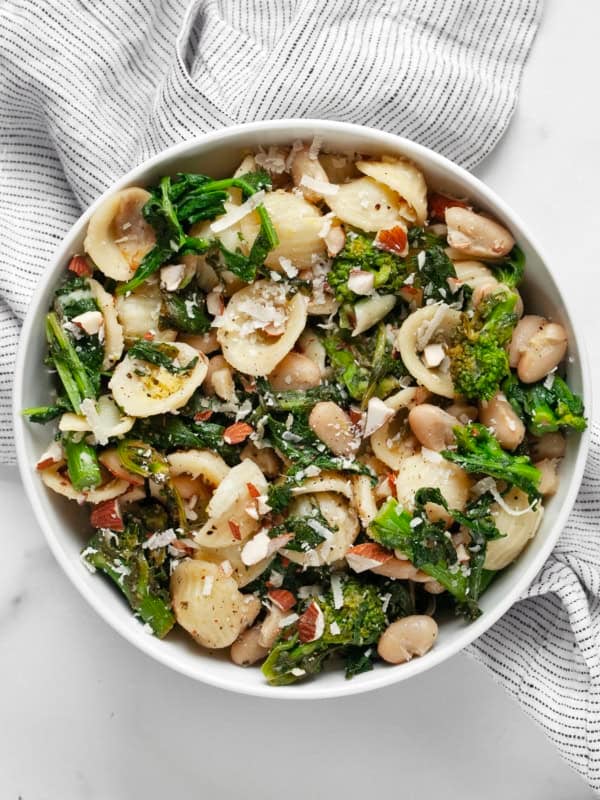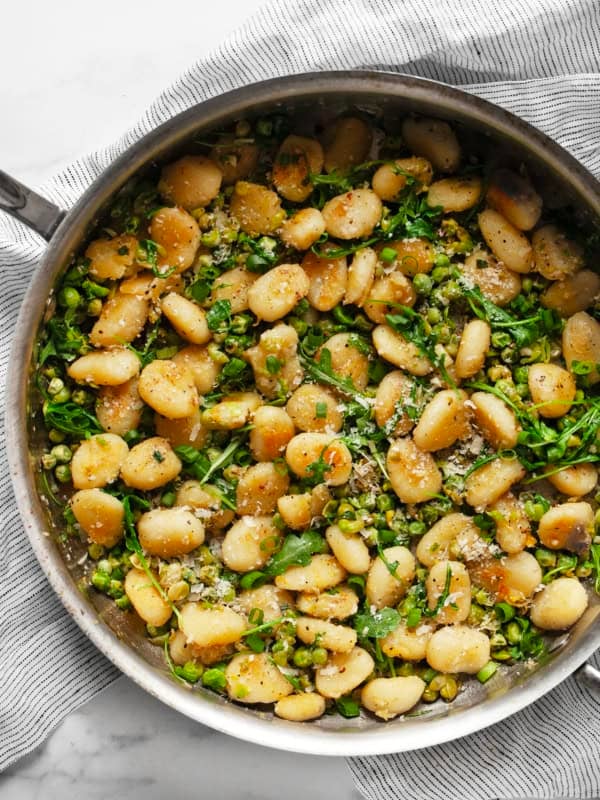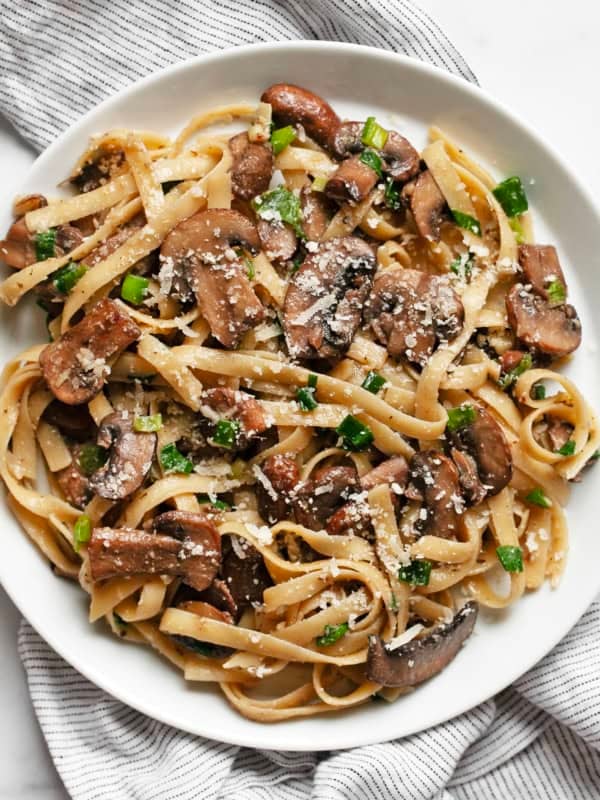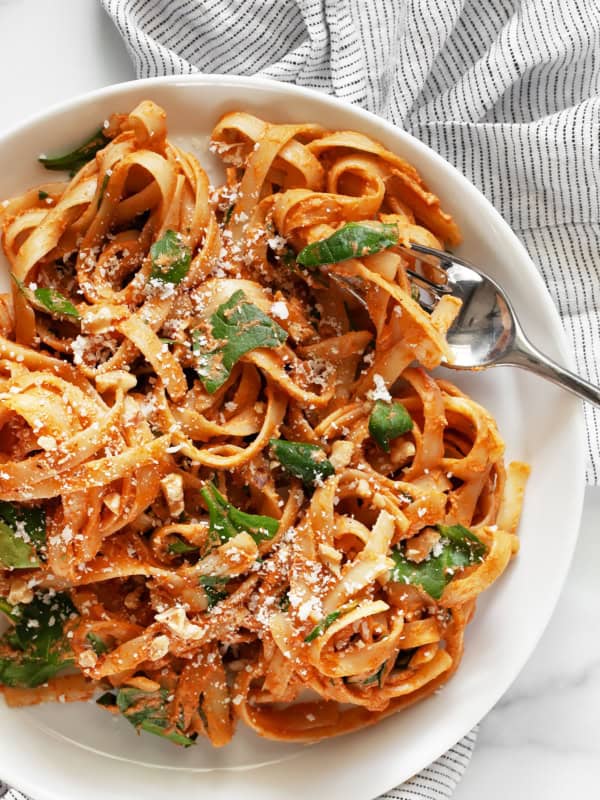Ramp Pesto
on May 11, 2015, Updated Jul 08, 2022
This post may contain affiliate links. Please read our disclosure policy.
Ramps are kind of like a garlicky version of a scallion. Only in season for a short time, make this fleeting spring veggie last a little longer with ramp pesto the perfect pasta sauce for any shape.
If you want to eat it as a side dish, try Ramp Pesto Garlic Bread.
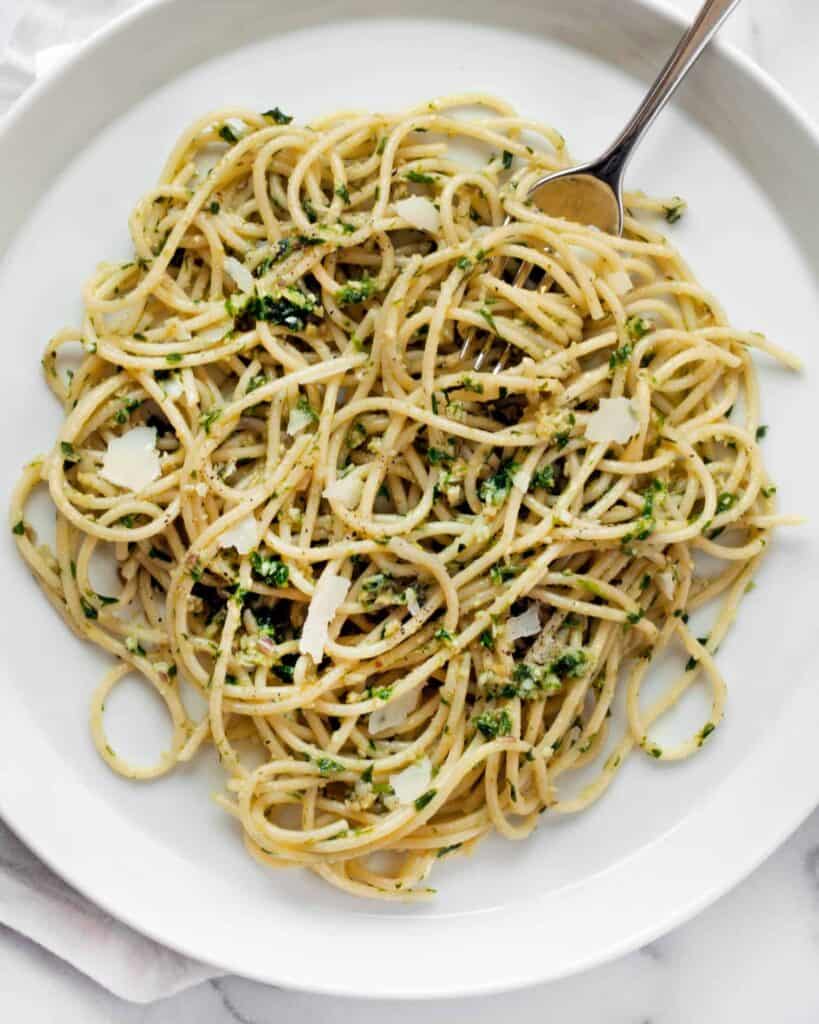
Table of Contents
Every year I am guaranteed to have at least one sleepless night. And it’s not because of anything bad. I get so excited for the kickoff of outdoor farmers market season in Chicago that I am just too giddy to sleep.
Even though the first few weeks are pretty sparse with selection, ramps one of the most special things that appear first at the stands. They are one of the few things that are tough to find in grocery stores, which we all mistakenly think have everything, but are easier to spot at the market. They are just too delicate for the store shelves.
What Are Ramps?
An unofficial first sign of early spring, these wild onions are a relative of shallots, leeks and scallions, all part of the allium family. They have flavor that reminds me of a cross between garlic and green onions. You can eat them raw, sautéed or roasted.
In appearance, they look closest to scallions. Wild ramps are long and slender but their leaves are broad and green and they have a burgundy stem that fades into the white bulb end and hairy root.
Ramp season runs from late April to early June. I recommend using fresh ramps as soon as you can. If you do need to store them for a couple days, wrap them in damp paper towels and put them in the refrigerator.
The Ingredients
This is what you need for this ramp pesto recipe:
- Ramps: One bunch should include about 8-10. Trim them and separate the stems from the leaves. Then roughly chop the stems.
- Walnuts are my go-to for pesto. I like the flavor, and they are much less expensive than pine nuts.
- Parmesan cheese: There’s no diverting from classic pesto here with this hard cheese.
- Olive oil: High-quality extra virgin olive oil is an absolute must.
- Lemon juice adds something bright and acidic.
- Salt & pepper: Seasoning is important for every recipe and especially ones with so few ingredients.
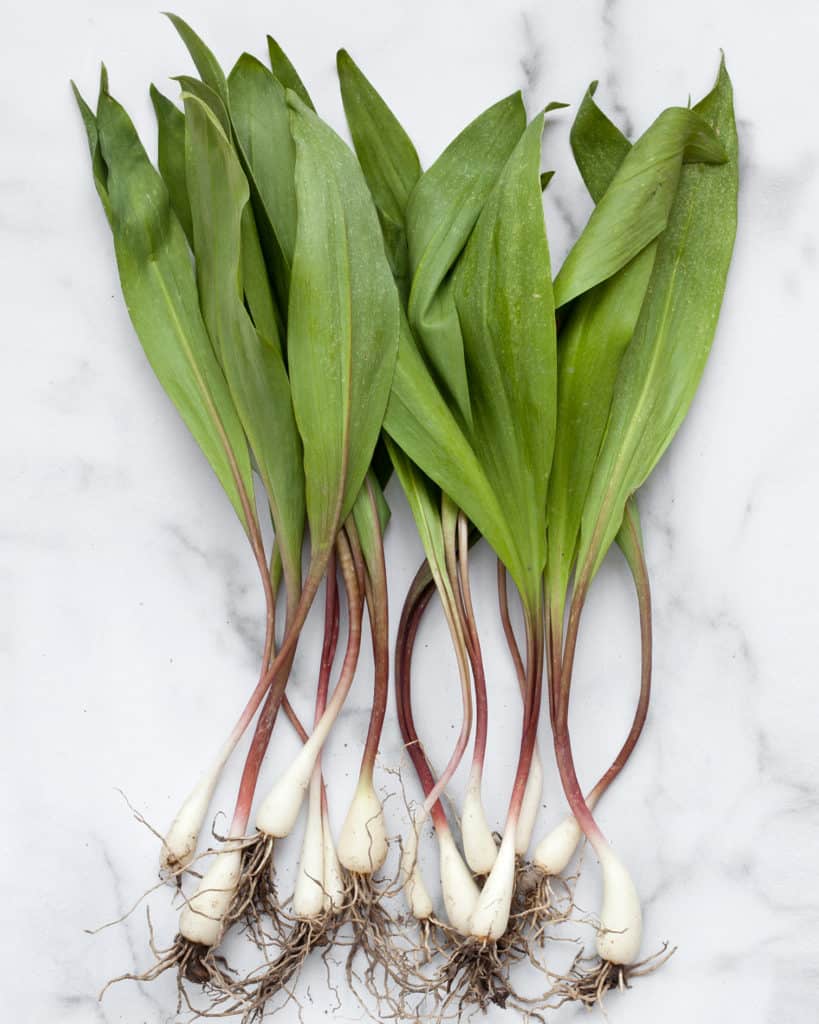
How To Make Ramp Pesto
- Combine the ramp stems & leaves, walnuts, Parmesan cheese, lemon juice, salt and pepper in a food processor. Finely chop them.
- Drizzle in the olive oil with the motor running until the pesto is pureed and combined.
- Stir the pesto into your favorite pasta. Sprinkle on more Parmesan before you serve it.
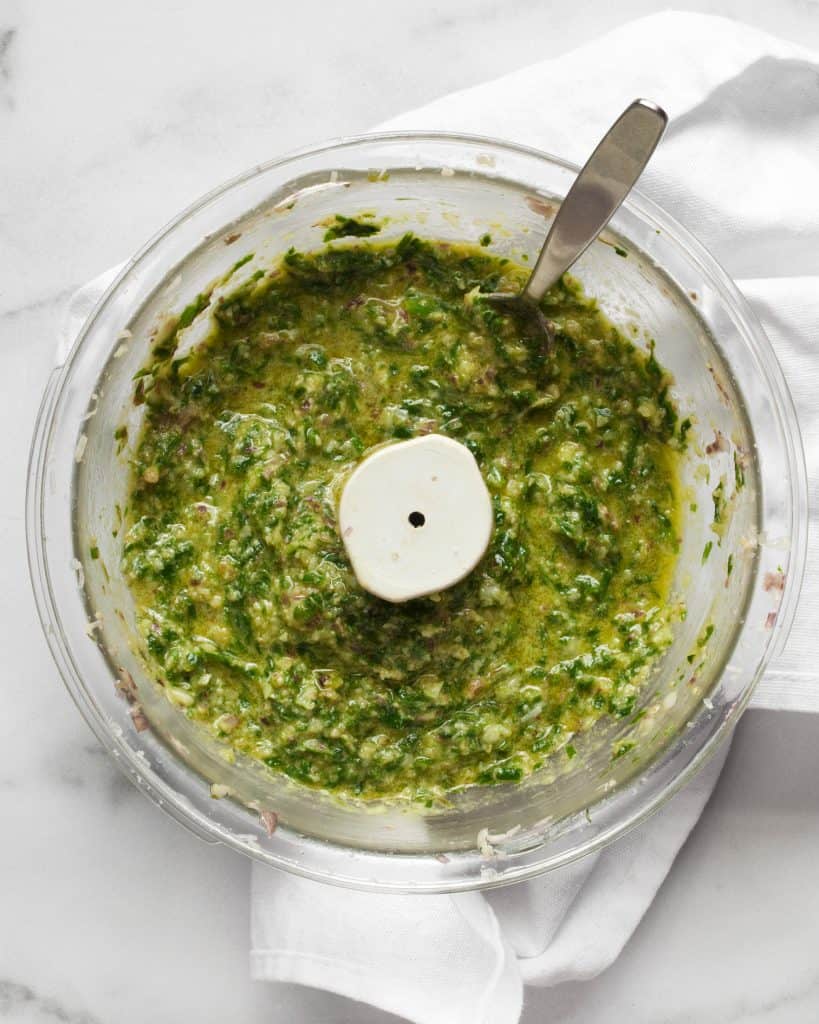
Storing The Pesto
Reach for mason jars and keep the pesto in the refrigerator up to 1 week. You can store it in the freezer up to 2 months. I recommend using ice cube trays to portion it out for simple thawing and use.
Serving
My favorite way to eat fresh pesto in general is to stir it into a large bowl of cooked pasta or grains like barley or farro. You can also whisk it into eggs or even vinaigrette for salads to add lots of garlicky flavor.
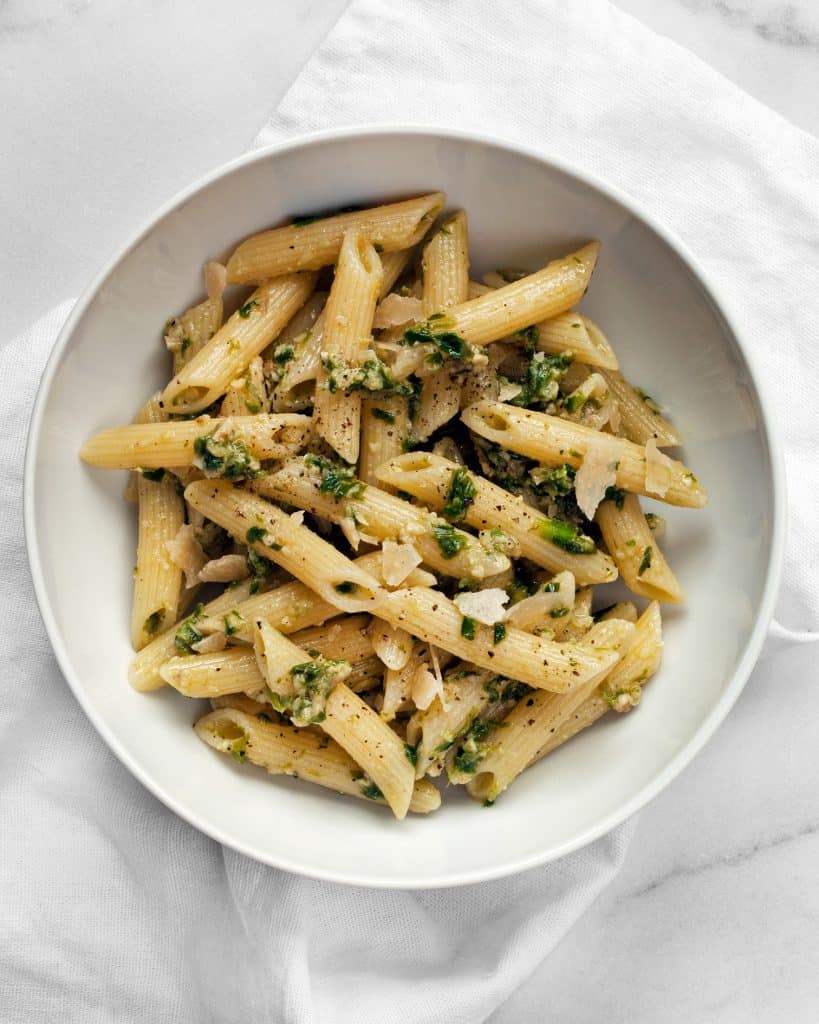
More Pesto Recipes
Traditional Basil Pesto
Roasted Broccoli Pesto
Sweet Corn Pesto
Spinach Pesto
Cilantro Pesto
Parsley Walnut Pesto
Vegan Kale Arugula Pesto
Sun-Dried Tomato Pesto
Ramp Pesto
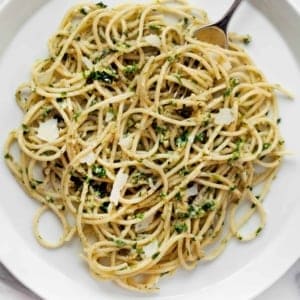
Ingredients
- 1 bunch ramps about 8-10, trimmed, stems and leaves separated
- 1/4 cup walnuts
- 1/2 ounce grated Parmesan plus more for garnish
- 1 tablespoon fresh lemon juice
- 1/4 teaspoon salt
- 1/4 teaspoon black pepper
- 1/2 cup olive oil
Instructions
- In a food processor, combine the ramp leaves and stems, walnuts, Parmesan, lemon juice, salt and pepper. Process them until they are finely chopped. With the motor running, drizzle in the olive oil until the pesto is fully combined.
- Stir it into warm pasta.
Notes
Nutrition
Nutrition information is automatically calculated, so should only be used as an approximation.

